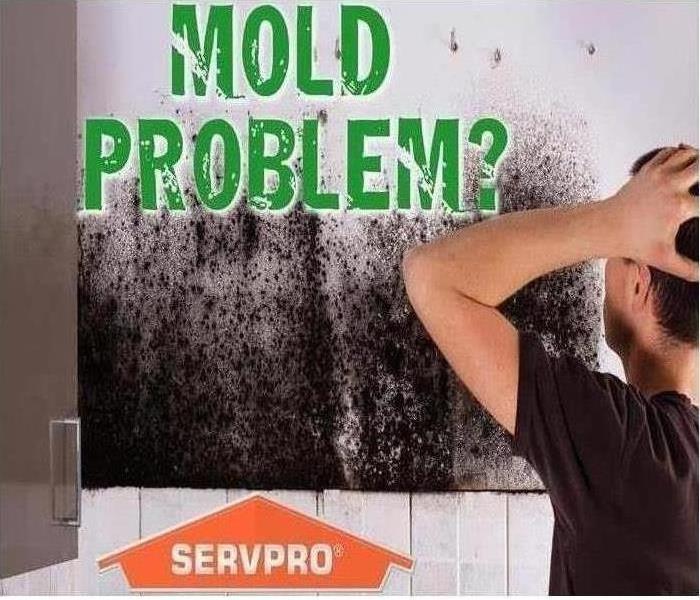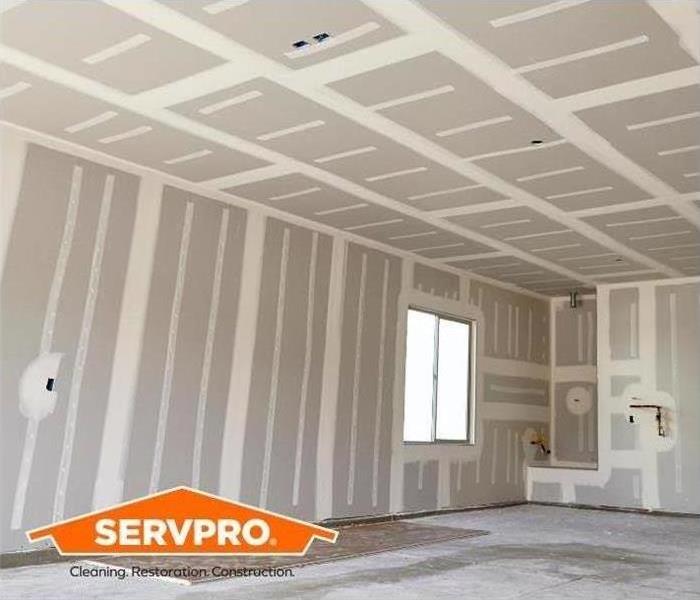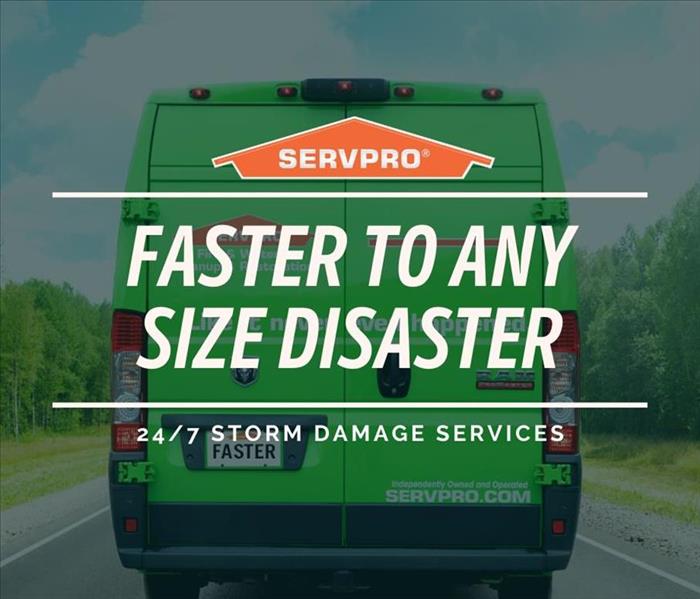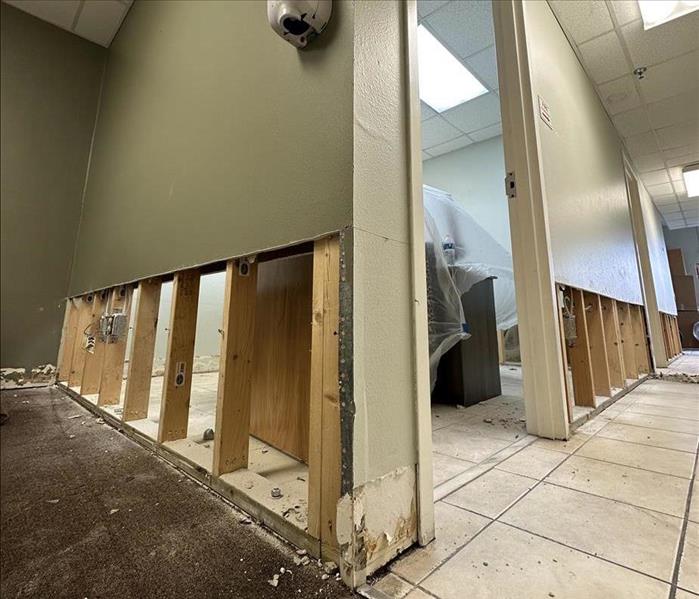Recent Posts
What Can You Do If You Find Mold In Your Uptown New Orleans Home or Business.
11/11/2024 (Permalink)
 This is what can happen when mold goes unchecked and gets out of control.
This is what can happen when mold goes unchecked and gets out of control.
Our Downtown New Orleans/Team MLR is trained and certified to restore mold outbreaks by the Institute for Inspection Cleaning and Restoration Certification (IICRC) in El Paso, TX. We have the training, equipment, and experience to restore areas compromised by mold quickly and efficiently. Here are some mold damage emergency tips from our website for things you can do and should not do while waiting for help to arrive:
What to Do
- Stay out of affected areas
- Turn off the heating, ventilation, and air conditioning (HVAC) system and fans
- Contact our Southeast El Paso office for mold remediation services
What Not to Do
- Don’t touch or disturb the mold
- Don’t blow air across any surfaces with visible or suspected mold growth
- Don’t attempt to dry the area yourself
- Don’t spray bleach or other disinfectants on the mold
Call Us!
When you discover a mold problem in your Downtown New Orleans/Team MLR commercial business, our team is available to help! We’ll clean and restore the mold damage “Like it never even happened.” Contact us today.
Why does drywall need to be removed and not dried after a water loss?
11/11/2024 (Permalink)
 Just because the water damage has been remediated, it doesn't mean the drywall is ready to use.
Just because the water damage has been remediated, it doesn't mean the drywall is ready to use.
When a restoration company places drying equipment, drywall can be dried within 3 to 5 days. However, in some cases, the drywall will require removal due to certain circumstances during water damage.
- If drywall is affected by "grey or black water" that carries contaminates- The drywall will have to be removed and replaced. Examples of this type of water can be found here.
- If drywall has wet insulation in the wall cavities, the drywall and insulation will have to be removed and replaced.
- If drywall has double layers, the drywall's layers must be removed and replaced.
- If drywall was not professionally dried and secondary damages occurred- The drywall will have to be removed and replaced.
Suffering from a water loss is never easy, but we are here to help minimize the impact on your family. Give your team at Downtown New Orleans/Team MLR a call 24/7 to see how we can mitigate any water damage your home or business may experience!
The deluge begins: Unleashing the relentless power of heavy rainfall.
11/11/2024 (Permalink)
 The SERVPRO team loaded up a work van and got ready to head to a job site.
The SERVPRO team loaded up a work van and got ready to head to a job site.
When the heavens open up, and heavy rain pours down, it begins a deluge that unleashes nature's relentless power. New Orleans homes, usually safe and secure, become vulnerable to the onslaught of water. The sheer force and volume of the rainfall can quickly overwhelm drainage systems, saturating the ground and infiltrating every possible opening in your home.
As the rain intensifies, the risk of water damage increases exponentially. Roofs, windows, and doors become the front line, facing the unyielding assault. Even the smallest cracks or compromised seals can allow water to seep in, finding its way into your sanctuary. Unrelenting in its determination, the water creeps through walls, ceilings, and floors, wreaking havoc in its path.
The immediate consequences of heavy rainfall are evident: standing water accumulating in basements, flooded rooms, and dampened carpets. The impact is not limited to visible areas alone; hidden moisture pockets can develop within walls, inviting mold growth and compromising structural integrity. The longer the water remains stagnant, the greater the risk of extensive damage and costly repairs.
Call the professionals at SERVPRO of Downtown New Orleans/Team MLR today. We are always here and ready to assist you.
Inundation and its aftermath: The immediate impact that leaves no corner untouched.
11/1/2023 (Permalink)
 SERVPRO Van with logo.
SERVPRO Van with logo.
When a storm unleashes its full fury, the result is a powerful inundation that spares no corner of your New Orleans area home. The rapid influx of water infiltrates every nook and cranny, leaving behind a trail of destruction. Water enters every crevice from the ground floor to the upper levels, leaving no area untouched.
As the water invades your living spaces, furniture, carpets, and belongings are soaked, bearing witness to the storm's force. Floors become slippery, making movement treacherous. Electrical systems are compromised, raising safety concerns. The immediate aftermath can leave you overwhelmed and confused.
Visible damage is only part of the story. Water seeps into hidden recesses and beneath floorboards, causing additional harm. Structural elements may weaken over time. Immediate action is crucial to prevent further deterioration and minimize long-term consequences. SERVPRO of New Orleans/MLR recognizes the urgency of addressing the immediate impact of inundation. Our experienced team arrives swiftly, equipped with the tools and expertise to extract standing water and begin drying.
Call the experts at SERVPRO today and let us handle all of your water and storm remediation needs for your home or office.
What Are The Different Types of Fire Damage?
11/1/2023 (Permalink)
 Different types of fire damage.
Different types of fire damage.
Dealing with the damage from a fire can be a long process. The fire could have been small, but the smoke from it did the majority of the damage. On the other side, most of the damage could have been from the fire itself. Lastly, there could have been another layer of damage caused when the fire was extinguished. Here are the main types of fire damage that are commonly dealt with.
Flame Damage - This could be from an electrical outlet that caused damage, all the way to a full-blown kitchen fire.
Smoke Damage - Smoke is literally in the air and can (and will) get into everything. Even after the rebuild is completed, there can still be a lingering smell of smoke to the property unless it is dealt with correctly.
3rd Party Damage - This type of damage comes from any in-house sprinkler system used to put the fire out or from the Fire Department themselves when they get to the scene.
Heat Damage - Even though a part of the structure might have not actually caught fire, it was probably severely heated up. This can cause structural damage and possible swelling that you might not notice right away.
After a fire, you could be dealing with flame, smoke, water and heat damage at the same time. FEMA has some great information on what to do after the fire. The best way to make sure that this is taken care of promptly and properly is to contact the team at SERVPRO to get on the job!
Is Bleach Enough to Fix My Mold Problem?
11/1/2023 (Permalink)
 Keeping mold from your home.
Keeping mold from your home.
The short answer is no. During the height of COVID, we were cleaning and sanitizing everything from door knobs to keyboards. Anything that was touched by multiple people was getting hit with one kind of cleaner or another. We should be taking that same approach to getting rid of mold. Mold has been here much longer than COVID and it isn’t going away anytime soon (maybe an asteroid). How do we get rid of mold in the home or office? The CDC says that using bleach to kill mold isn’t always recommended. Using a bleach/water mixture will most likely destroy the surface mold, but the growth goes much deeper than that. Bleach cannot penetrate the deeper levels of porous materials, so you will most likely see it come back within a short period of time.
Here are a few things that the EPA says about the basics of mold cleanup.
- Moisture control. If you can keep it dry, you can help control the growth of mold.
- Scrub the mold off of hard surfaces with a detergent and water, then dry completely.
- Any absorbent materials like carpets, rugs, and ceiling tiles will most likely need to be thrown away.
If you have tried to get rid of mold and can’t seem to keep it away, contact your Downtown New Orleans/MLR SERVPRO professionals today. We have the experience, equipment, and products to help destroy the mold and keep it from returning.
How to get the most out of a partial loss.
8/9/2023 (Permalink)
 Water damage
Water damage
A commercial fire can be devastating, both financially and structurally, as it often results in the triple threat of fire, water, and smoke damage. Not only is the area where the fire most likely damaged, but so can other areas of the building due to traveling smoke and soot through the vents. Try following the next steps in order to maximize your recovery and get your business back up and running.
Allow the Downtown New Orleans team to perform a thorough inspection and document damage. Document everything that was damaged or destroyed, even if you're not sure it's worth documenting. To the best of your ability, check for mold, smoke, soot, and other irritants.
Our team can handle anywhere that is too difficult for you to handle. Most insurance adjusters won't accept a fire loss claim without the findings of a thorough inspection. You must call in a licensed contractor who can walk through your building and inspect the roof, structure, siding, windows, insulation and plumbing, and HVAC systems. The contractor can provide an official report that itemizes damages and losses. This is called an adjusters report. Most insurance companies are required to cover mold, smoke, or soot restoration, so long as the damage was from the recent disaster. Have your inspector check for any irritants so that you can request remediation?
In the event some things are not covered you are able to claim unreimbursed losses on your tax returns.
It is important to have a professional mitigation team on speed dial to handle any disasters your business may face. Contact the professionals at SERVPRO today!
Here are 8 reasons why your toilet might be leaking.
8/9/2023 (Permalink)
 Leaking toilet.
Leaking toilet.
We have all walked past the bathroom and hear the water running in the back of the toilet and either jiggled the handle or lifted the back to see if anything was obviously wrong. Water leaking around your toilet can soak into the floor and beyond. It is important to take action if you see a puddle of water around the toilet bowl or even hear a slow drip somewhere behind the wall.
1. Tank is Cracked
While tanks and bowls are pretty durable, they can get cracks. These often start with a small, hairline crack, but can get bigger. Toilets may get shifted or jarred and can get cracked in the back where you won’t notice them.
2. Worn Washers
There are two large bolts that keep the tank attached to the bowl, and two more that keep the toilet bolted to the floor. If the bolts or washers get stripped, rusted out, break, or wear out, they won’t be able to hold it all together.
3. Pipe Corrosion
There could be corrosion in your pipes because of age, impurities in the water, or heavy metals in your water. Rust will develop in the metallic portions of the toilet because of this corrosion.
Pipe corrosion can often cause a lot of damage because you often don’t know it is even there.
4. Float
The float is the hollow ball that floats on the surface of the water in your toilet tank. It can become unhooked, cracked, or it isn’t lined up properly, and the fill valve may run too much, causing a leak. The chain may come off, or if it gets a crack, it can take on water and not work properly.
5. Faulty Supply Line
If there is any kind of damage to supply lines, it can put a major strain on your toilet. Sometimes, if the joints in a supply line come undone and break down, water starts to drip out. The rubber lining in a supply line can also start to leak after several years.
6. Worn-Out Fill Valve
The fill valve on the toilet can also wear down over time. This is often due to mineral deposits, but they can also rust. If enough builds up to warp the fill valve, it can stop working properly, preventing your toilet from shutting off and causing leakage.
7. Stuck or Worn-out Flapper
The flapper is that plug in the bottom of your tank. It releases the water when you flush. If it gets stuck, either open or closed, you have a problem. This can also happen if your handle is stuck.
If the flapper is stuck open, the fill valve will not shut off, so it will just keep running. If the flapper wears out, no longer fits properly, or gets a tear, then it will not be able to regulate the water in the tank.
8. Broken Connections
Your toilet has many different connectors that prevent water leaks. If any of these connections lose their seal, water may end up on your bathroom floor. You can check your toilet’s connections to see if there are any problems before they turn into leaks.
If you find you are dealing with a water loss from any of the above issues, call a plumber to address the leak. Once the leak is fixed SERVPRO of West El Paso is here to help! We can make sure the area is dry and help prevent further issues like microbial growth!
Things to immediately do if the power goes out in your home or office.
8/9/2023 (Permalink)
 SERVPRO lights out
SERVPRO lights out
Power outages are especially common in the West El Paso, especially after a storm. It is important to understand what to do during a power outage.
Turn On Your Emergency Lights:
Make sure your emergency lights are somewhere accessible in case you have to find them in the dark. Ideally, keep a flashlight in each room of your home.
In general, it is better to use battery-operated lights instead of candles because of the fire risk.
See If Your Neighbors Have Power:
If your neighbors still have electricity, then the problem is likely inside your home. Start by checking the main fuses or circuit breakers to see if they have blown.
Check the Extent of the Problem:
If your neighbors also don’t have electricity, you’ll want to see how widespread the problem is. You can do this by calling your power supplier.
Contact Family Members:
During large power outages, stoplights and streetlights can go out too – making it unsafe to drive. If your family members aren’t at home, get in contact with them.
Unplug Appliances:
When the power comes back on, it can cause a huge power surge which may damage electronics.
Unplug all your expensive electronics from the wall so they don’t get damaged when the power comes back on.
See if Water is Safe to Drink:
When the power goes out, call your local authorities to see if the water is safe to drink.
Keep Fridge and Freezer Closed:
Food kept in an unopened refrigerator will stay cold for about 4 hours.
A full freezer will keep its temperature for about 48 hours.
Save Your Phone’s Battery:
Turn off any power-consuming apps on your phone to save its battery.
Stay Cool (Summer Power Outages):
If the power outage occurs during a heatwave and you have health conditions, then you might need to evacuate your home to a cooler location, such as a shopping mall or church.
Stay Warm (Winter Power Outages):
If a power outage occurs during winter, now is the time to start using your emergency heating method.
Be cautious about using generators, camp stoves, or grills for heating as they can cause carbon monoxide poisoning.

 24/7 Emergency Service
24/7 Emergency Service








